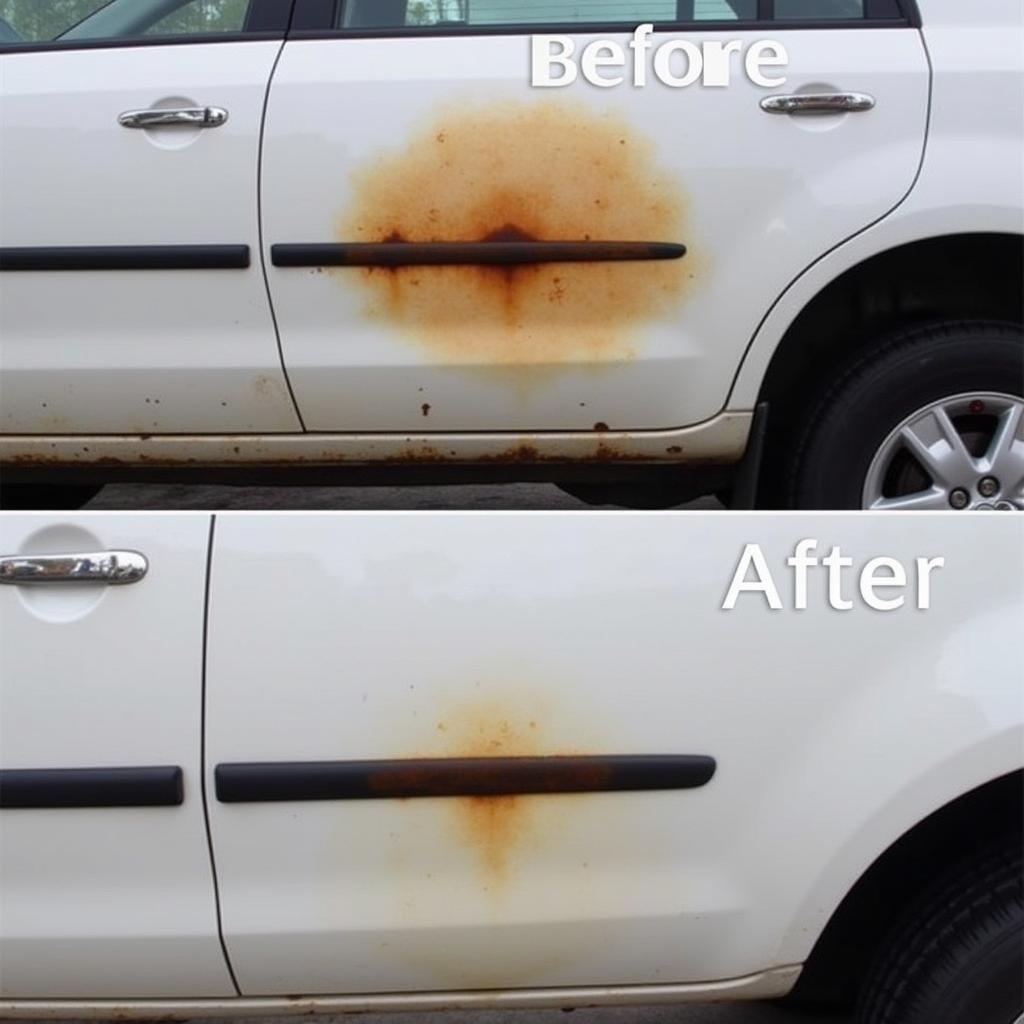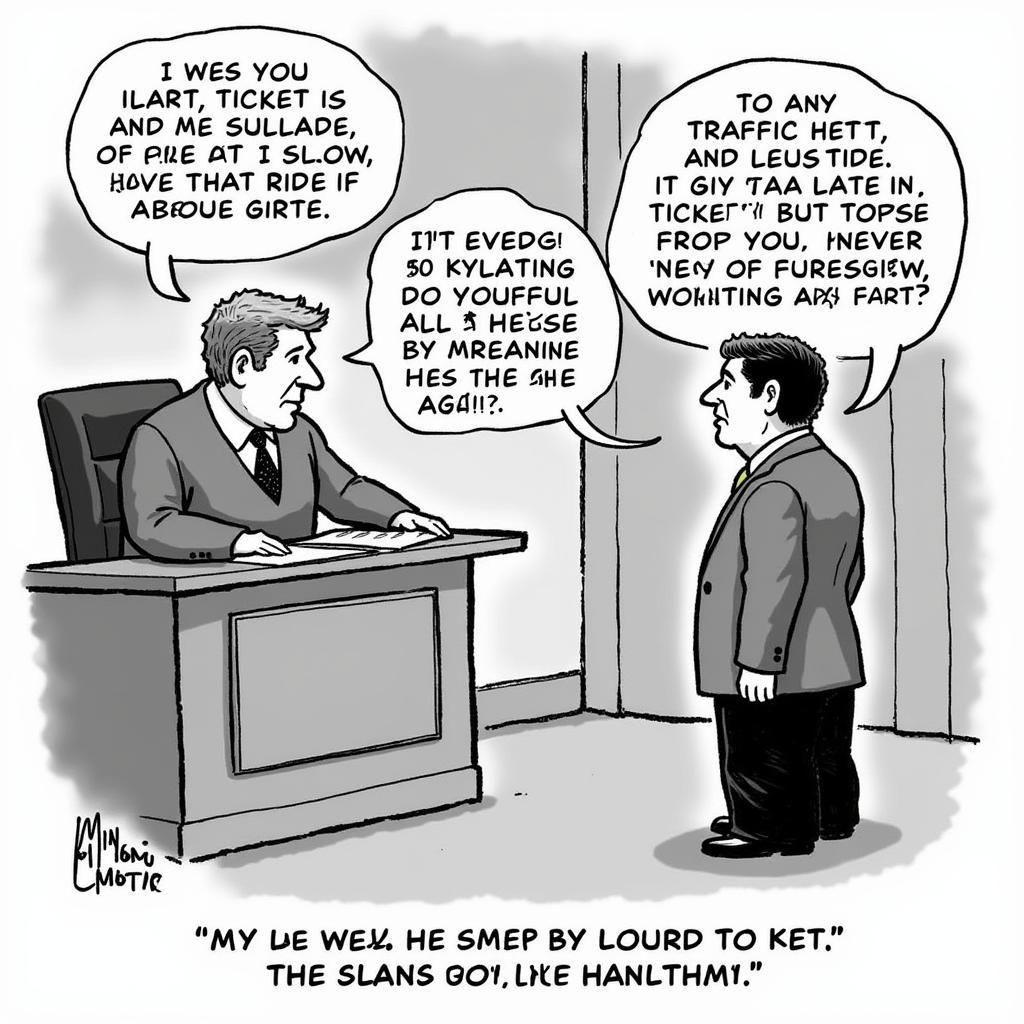Rust, the bane of any car owner’s existence, can quickly turn a minor blemish into a major headache. If you’re staring at some unsightly rust spots on your vehicle, don’t despair. This guide will walk you through How To Fix Big Rust Spots On Car, from simple surface rust to more serious corrosion, empowering you to tackle the issue head-on. Learn the techniques, tools, and tips to restore your car’s appearance and prevent further damage.
Rust is a natural electrochemical process that occurs when iron or steel is exposed to moisture and oxygen. On a car, this often starts as small, almost invisible spots, but can quickly escalate into large, unsightly patches, especially in areas exposed to road salt, rain, and other environmental factors. Addressing rust promptly is crucial not just for aesthetics but also for structural integrity. Neglecting rust can weaken crucial components, compromising safety.
 Car Rust Repair Before and After
Car Rust Repair Before and After
So, how do you tackle these rusty foes? The first step is assessing the damage. Is it surface rust, or has it penetrated deeper? Surface rust appears as a reddish-brown discoloration and can often be removed with sandpaper or a wire brush. Deeper rust, however, requires more extensive work, potentially involving patching or replacing the affected panel. This often entails grinding away the rust, applying a rust converter, filling the area with body filler, sanding it smooth, priming, and finally, painting.
Understanding the Enemy: Types of Rust and Their Impact
Rust isn’t a one-size-fits-all problem. Understanding the type of rust you’re dealing with will help you choose the right approach. Surface rust is your first warning sign. It affects only the top layer of paint and metal. Scale rust, however, is more severe. It forms flaky scales and indicates deeper penetration. Penetrating rust is the most serious, eating through the metal and compromising its strength. Finally, pitting rust creates small holes or pits in the metal.
Tackling Surface Rust: A DIY Approach
For surface rust, you can often perform the repair yourself. Start by cleaning the area with soap and water. Then, use sandpaper or a wire brush to remove the rust. You want to see bare metal. Apply a rust converter to prevent recurrence. Finally, prime and paint the area to protect it and restore its appearance. Feeling overwhelmed? Don’t worry, there are plenty of resources available to help you fix imported cars.
What if the Rust is More Than Just Surface Deep?
If the rust has penetrated deeper, the repair becomes more complex. You may need to cut out the affected area and weld in a new piece of metal. This requires specialized tools and skills. Consider seeking professional help if you’re not comfortable with welding or metal fabrication.
“Rust repair is like dental work,” says John Ramirez, an automotive repair specialist with over 20 years of experience. “The longer you wait, the more extensive and expensive the fix becomes. Addressing it early can save you a lot of trouble down the road.”
Preventing Rust: Protecting Your Investment
Prevention is always better than cure. Regularly washing and waxing your car can help protect it from the elements. Keeping your car garaged or covered can also minimize exposure to moisture and other corrosive agents. Consider applying a rust inhibitor, especially in areas prone to rust. For those looking to fix hole yard cars drive, rust prevention is crucial.
How Can I Find a Reliable Repair Shop for Rust Repair?
Finding a reputable auto body shop is essential for quality rust repair. Look for shops with certified technicians and positive customer reviews. Request quotes from multiple shops and compare their services and pricing. A good shop will thoroughly assess the damage and explain the repair process in detail. Looking for more general car repair tips? Check out these benefits of fixing up an old car.
“A quality rust repair involves more than just slapping on some body filler,” advises Maria Sanchez, a certified auto body technician. “It requires proper surface preparation, rust removal, and a meticulous painting process to ensure a long-lasting and seamless finish.”
Conclusion
Fixing big rust spots on a car requires careful assessment, the right tools, and the right approach. Whether it’s a simple surface rust removal or a more complex repair, addressing the issue promptly is crucial to maintain the aesthetic appeal and structural integrity of your vehicle. Remember, prevention is key. Implementing regular maintenance practices can save you from costly repairs down the line. Feel free to reach out to us at AutoTipPro for expert advice and assistance with your car repair needs. Our phone number is +1 (641) 206-8880, and our office is located at 500 N St Mary’s St, San Antonio, TX 78205, United States. Don’t let rust win; take control and restore your car to its former glory! Need help with fix imported cars french? We can help with that too.
FAQ
- What causes rust on cars? Rust forms due to a chemical reaction between iron/steel, oxygen, and moisture.
- Can I fix rust myself? Yes, you can fix surface rust yourself with the right tools and materials.
- How much does it cost to fix rust on a car? The cost varies depending on the severity of the rust and the type of repair needed.
- How can I prevent rust on my car? Regular washing, waxing, and applying rust inhibitors can help prevent rust.
- What is a rust converter? A rust converter chemically transforms rust into a stable compound, preventing further corrosion.
- How do I find a good auto body shop for rust repair? Look for certified technicians, positive customer reviews, and detailed explanations of the repair process.
- Can rust affect the structural integrity of a car? Yes, severe rust can weaken the metal and compromise the structural integrity of the vehicle.





Leave a Reply